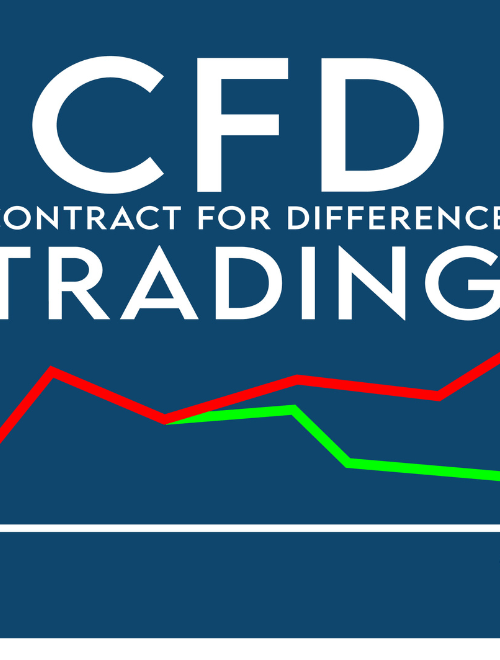INTRODUCTION: UNRAVELLING THE WORLD OF CFDS
Contracts for Difference (CFDs) have revolutionized traders’ engagement in financial markets, offering flexibility, leverage, and accessibility to a wide range of assets. This comprehensive guide delves into the intricacies of CFD trading, exploring its mechanics, advantages, risks, and strategies for success.
whenever we talk about CFDs which represent the contracts for differences that are not currently used in India for a vast majority but will be implemented soon in the upcoming years, in this article we will understand the usage of contracts for differences which is most probably used in many other countries.
In India, we generally use a method called MTF ( marginal trading fund) again which is not generated by the majority of brokers, or some brokers might require permission to enable MFT to their account.
WHAT ARE CFDS: EXPLORING THE BASICS –
CFDs are derivative contracts that enable traders to speculate on the price movements of various financial instruments, including stocks, indices, currencies, commodities, and cryptocurrencies, without owning the underlying assets. Instead, traders agree with a broker to exchange the difference in the asset’s price between the opening and closing of the contract.
UNDERSTANDING HOW CFDS WORK: MECHANICS AND ITS FEATURES-

CFDs operate based on margin trading, allowing traders to leverage their positions by only depositing a fraction of the total trade value. This amplifies both potential profits and losses, making CFD trading a high-risk, high-reward endeavor. Additionally, CFDs offer the ability to go long (buy) or short (sell) on an asset, providing opportunities to profit from both rising and falling markets.
ADVANTAGES OF CFD TRADING: ACCESSIBILITY AND FLEXIBILITY
One of the primary advantages of CFD trading is its flexibility, as traders can access a wide range of markets and instruments through a single platform. Furthermore, CFDs offer the ability to trade on margin, allowing traders to control larger positions with relatively small amounts of capital. Additionally, CFDs typically do not have expiration dates, providing traders with greater flexibility in their trading strategies.
RISK MANAGEMENT IN CFD TRADING: STRATEGIES AND TECHNIQUES
Managing risk is crucial in CFD trading, given the potential for substantial losses due to leverage. Traders employ various risk management techniques, including setting stop-loss orders, diversifying their portfolios, using trailing stops, and limiting the size of their positions relative to their account size. Additionally, maintaining a disciplined approach to trading and conducting thorough market analysis can help mitigate risk exposure.
POPULAR MARKETS FOR CFD TRADING – EXPLORING OPPORTUNITIES
CFDs offer access to a diverse range of markets, including equities, indices, forex, commodities, and cryptocurrencies. Some of the most popular markets for CFD trading include major stock indices like the S&P 500 and FTSE 100, currency pairs such as EUR/USD and GBP/JPY, commodities like gold and crude oil, and cryptocurrencies such as Bitcoin and Ethereum.
REGULATORY ENVIRONMENT AND OVERSIGHT IN CFD TRADING
CFD trading is subject to regulatory oversight in many jurisdictions to protect investors and ensure fair and transparent markets. Regulations may vary depending on the region, with regulatory bodies imposing rules related to leverage limits, client fund protection, disclosure requirements, and more. Traders should be aware of the regulatory framework in their jurisdiction and choose reputable brokers regulated by recognized authorities.
CHALLENGES AND CONSIDERATIONS IN CFD TRADING –
While CFD trading offers significant opportunities, it also comes with inherent risks and challenges. These include market volatility, leverage risks, counterparty risk (risk of the broker defaulting), and potential conflicts of interest between traders and brokers. Additionally, traders must be mindful of overnight financing costs, which can erode profits if positions are held for extended periods.
CONCLUSION UNDERSTANDING THE WORLD OF CFD TRADING –
In conclusion, CFDs present an innovative and accessible way for traders to participate in financial markets, offering flexibility, leverage, and a diverse range of trading opportunities. However, successful CFD trading requires a solid understanding of the mechanics, risk management techniques, and market dynamics. By employing sound strategies, managing risk effectively, and staying informed about market developments, traders can navigate the complexities of CFD trading and strive for success in their endeavors.


What i do not realize is in reality how you are not actually a lot more well-favored than you might be now. You’re so intelligent. You realize therefore considerably with regards to this topic, produced me individually imagine it from numerous varied angles. Its like men and women don’t seem to be interested unless it?¦s something to do with Woman gaga! Your personal stuffs great. At all times care for it up!
I have read a few excellent stuff here. Definitely value bookmarking for revisiting. I wonder how so much attempt you set to create one of these fantastic informative web site.
Hiya, I am really glad I’ve found this information. Today bloggers publish just about gossips and internet and this is really frustrating. A good site with exciting content, that is what I need. Thanks for keeping this web-site, I’ll be visiting it. Do you do newsletters? Can not find it.
I’ve read some just right stuff here. Certainly value bookmarking for revisiting. I wonder how much attempt you place to create this type of excellent informative web site.
Hi, Neat post. There is an issue with your website in web explorer, may check this?K IE nonetheless is the marketplace leader and a good element of other folks will miss your excellent writing due to this problem.
Keep functioning ,splendid job!